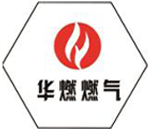
Dec . 27, 2024 16:18
Back to list
gas pressure reducing station
Understanding Gas Pressure Reducing Stations Ensuring Safe and Efficient Gas Distribution
Gas pressure reducing stations play a crucial role in the distribution of natural gas. As gas travels through pipelines, it is transported at high pressures. However, the end-users of this gas, including residential, commercial, and industrial consumers, require the gas at much lower pressures for safe and efficient use. This is where gas pressure reducing stations come into play.
Function and Importance
A gas pressure reducing station is designed to lower the high pressure of gas to a regulated, usable pressure. The main components of such a station typically include pressure regulators, valves, filters, and sometimes flow meters. These stations ensure that the pressure of natural gas is consistent and safe for end-users, preventing any potential hazards associated with high-pressure gas.
The importance of these stations cannot be overstated. They provide a link between the high-pressure pipelines that transport gas over long distances and the lower-pressure systems that deliver it to homes and businesses. By effectively managing gas pressure, these stations not only ensure safety but also enhance the reliability of the gas supply. A well-functioning pressure reducing station can significantly reduce the risks of leaks, explosions, and other accidents that can occur with improperly managed gas pressure.
Components of a Gas Pressure Reducing Station
1. Pressure Regulators These are the heart of the pressure reducing station. They automatically adjust the flow of gas based on the downstream pressure requirements. Regulators can function in various modes, including pressure maintaining, pressure relieving, or a combination of both.
2. Isolation Valves These valves provide the ability to isolate sections of the pipeline for maintenance or emergency situations. They are crucial for safety, allowing for quick shutdown of gas flow in case of a fault or when performing system upgrades.
3. Filters Filters are essential to remove impurities and particulates from the gas before it enters the pressure reducing station. Contaminants can damage the regulators and other equipment, leading to system failures and increased maintenance costs.
gas pressure reducing station

4. Flow Meters While not always present, flow meters can be included in the design of a pressure reducing station to monitor the amount of gas being reduced and supplied. This data can be vital for managing supply and ensuring that consumption doesn't exceed safe levels.
Design and Operation
The design of gas pressure reducing stations involves several considerations, including the intended flow rate, the type of gas being used, and the specific pressure requirements of end-users. Engineers must carefully calculate the sizing of the regulations and other components, as undersized devices can lead to pressure drops and supply issues, while oversized components can cause inefficiency and unnecessary costs.
The operation of these stations requires diligent monitoring to adjust to variations in demand. For example, during peak usage times, such as cold winter days when heating demand is at its highest, the pressure reducing station must respond to increased flow demands without compromising the pressure stability.
Maintenance and Safety
Regular maintenance of gas pressure reducing stations is vital for safe operation. Maintenance activities may include inspecting and cleaning filters, testing the functionality of regulators and valves, and ensuring that all safety systems are operational. Operators must also be well-trained and understand the risks associated with gas management, as even minor failures can lead to significant accidents.
In addition to routine maintenance, regulatory compliance is crucial. Gas pressure reducing stations are subject to various industry standards and regulations to ensure they operate safely and effectively. Compliance helps protect not only the infrastructure but also the communities surrounding these facilities.
Conclusion
Gas pressure reducing stations are vital infrastructures in the natural gas distribution system. They ensure the safe, efficient, and reliable delivery of gas to consumers while mitigating potential hazards associated with high-pressure gas systems. As the demand for natural gas continues to rise, the importance of these stations, their design, and their operation will only grow, reinforcing their role as cornerstones of modern energy distribution. Investing in technology and training for these systems is essential for a safe energy future.
Latest news
-
Safety Valve Spring-Loaded Design Overpressure ProtectionNewsJul.25,2025
-
Precision Voltage Regulator AC5 Accuracy Grade PerformanceNewsJul.25,2025
-
Natural Gas Pressure Regulating Skid Industrial Pipeline ApplicationsNewsJul.25,2025
-
Natural Gas Filter Stainless Steel Mesh Element DesignNewsJul.25,2025
-
Gas Pressure Regulator Valve Direct-Acting Spring-Loaded DesignNewsJul.25,2025
-
Decompression Equipment Multi-Stage Heat Exchange System DesignNewsJul.25,2025

